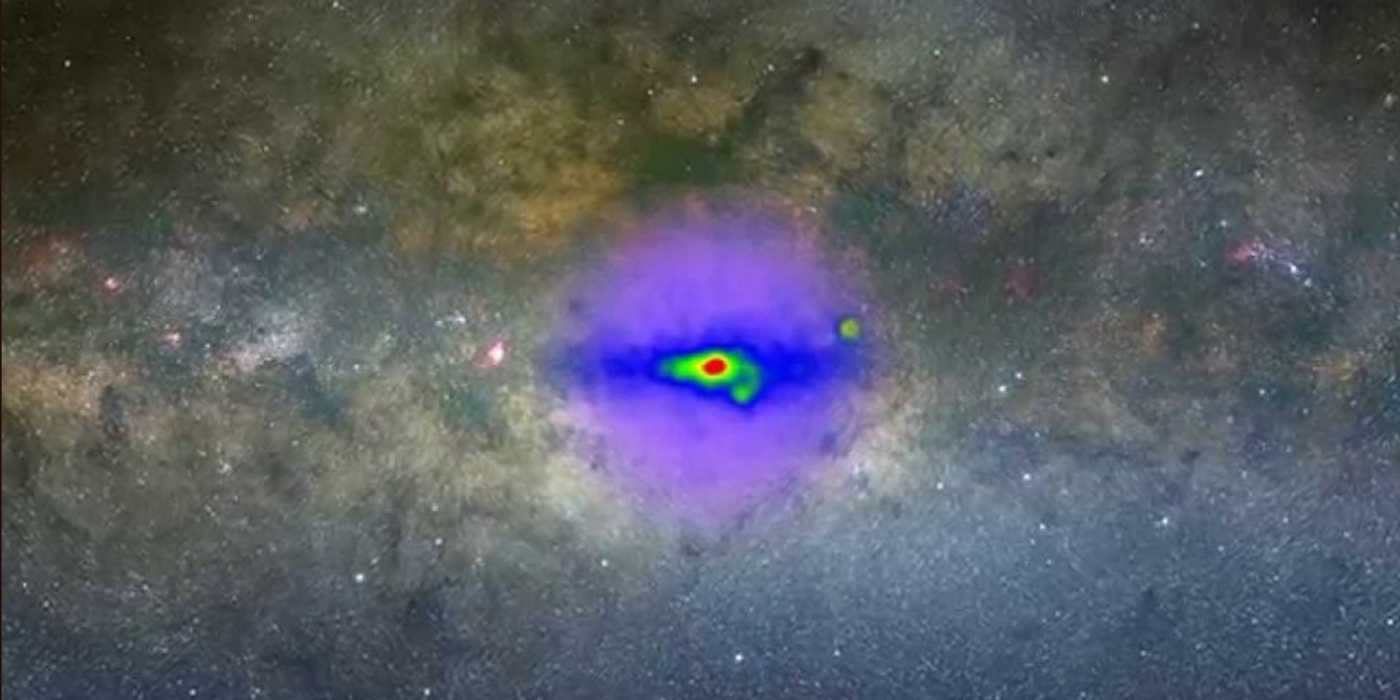Astronomers Baffled by the Strange Glow at the Center of Milky Way

The story started back in 2009, when cosmologist Dan Hooper at the University of Chicago first saw a mysterious gamma-ray glow at the center of the Milky Way, based on analyses conducted on the images captured by NASA’s Fermi Gamma-ray Space Telescope. The telescope is on board of a spacecraft launched in 2008 into low Earth orbit, in order to perform gamma ray astronomy observations. Hooper and his co-worker thought that the "aura" was the result of dark matter annihilation.
Dark matter is an elusive entity that is believed to make up 27% of the universe's matter-energy continuum (in contrast, normal matter only constitutes 5%) and capable of bending the paths of stars with its gravitational pull. Astronomers have long suspected that our galaxy sits inside a giant pool of dark matter.

In 2015, two studies reexamined the data from Fermi telescopes and found graininess within the glow. If dark matter was behind the massive gamma ray at the galactic center, the spread of photonic energy should have appeared even without any bright spots. Therefore, the authors behind these two works suggested that instead, a large population of pulsars is likely the cause of the glow.
First discovered by astrophysicist Jocelyn Bell Burnell, pulsars are highly magnetized, dying stars with ten times or more the mass of our sun. They emit an intensive pulse of electromagnetic radiation, with an interval ranging from milliseconds to seconds.
Just as the pulsar theory was gaining momentum and the dark matter theory slowly slipped away, the debate took a bewildering turn: the authors in one of the 2015 studies walked back their earlier conclusion: a flawed technique they used in the study might have misidentified dark matter as pulsars.
What's more, a recent report from the International Space Station’s Alpha Magnetic Spectrometer experiment gave the dark matter theory a leg-up: the levels of antiprotons in the galactic center, an indication of the remnant of dark matter collisions, is higher than expected.
This finding not only puts the dark matter theory in a more advantageou spot, but also is seen by some as the first indirect prove of dark matter.
Hints of Dark Matter from Milky Way's Center Revealed by Gamma-Ray Map (Space.com)
Source: the Daily Galaxy








